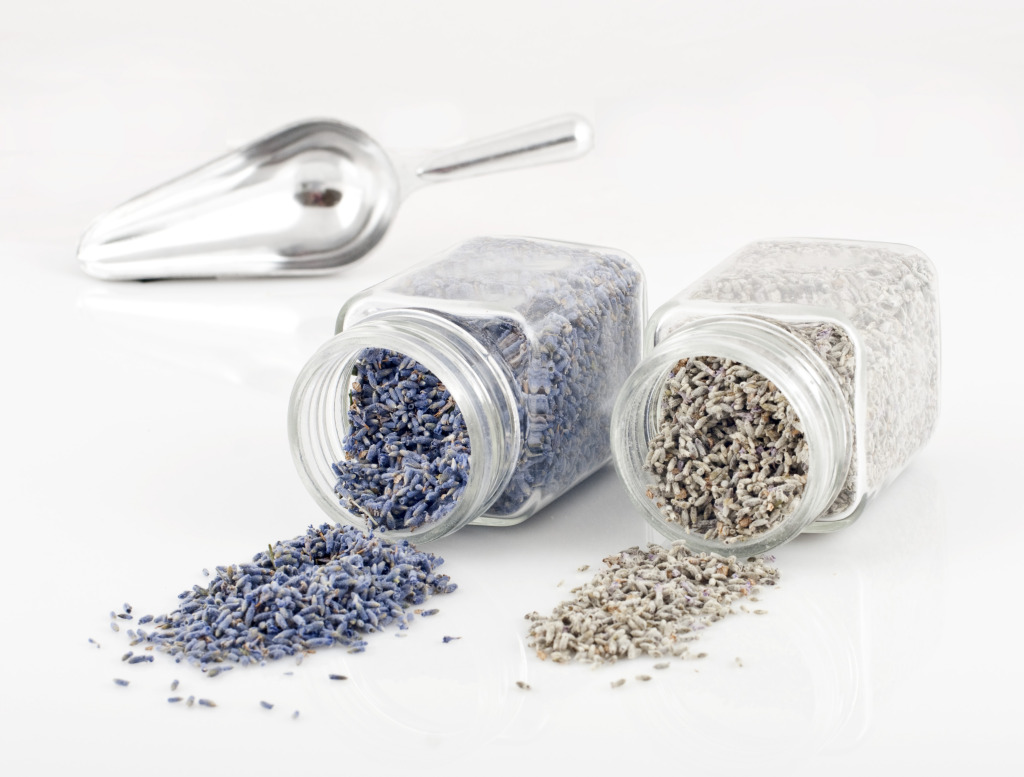Sometimes food prepared with lavender tastes like soap.
But that’s not the way it should be! Cooking with culinary lavender is a fun and delicious process, as culinary lavender brings out the best flavors in sweet and savory dishes – when it’s used correctly.
Lavender highlights the richness of fruits, compliments herbs and peppery dishes, adds intrigue and depth to meat and vegetable roasts, and enhances sweet desserts with unique floral and sweet notes.
What makes a lavender culinary? Why do some lavender foods taste like soap? And how do you cook with lavender the right way?
In this post, we’re digging into these primary questions about culinary lavender so that you can properly enjoy the wonderful benefits of cooking with culinary lavender.

What makes lavender “culinary”?
The term ‘culinary lavender’ refers to both cultivar (type) of lavender and the way it’s processed.
Some lavender cultivars are better than others when it comes to cooking.
Popular culinary lavender cultivars include:
- L. angustifolia ‘Folgate’
- L. angustifolia ‘Melissa’
- L. angustifolia ‘Croxton’s Wild’
- L. angustifolia ‘Wykoff’
- L. angustifolia ‘Miss Katherine’
- L. angustifolia ‘Royal Velvet’
- L. angustifolia ‘Buena Vista’
Notice anything about these cultivars? They’re all L. angustifolias – commonly known as True Lavenders.
Each cultivar has a distinct taste. ‘Melissa’ is slightly peppery. ‘Croxton’s Wild’ has an earthy, cinnamony taste. ‘Miss Katherine’ is sweet and floral. A great go-to culinary lavender cultivar is ‘Buena Vista’ and ‘Folgate’.
There are many, many types of culinary lavender cultivars, but most of them are types of True Lavender, vs. Lavandin, for example.
Lavandins (L. x. intermedia) is edible, as is all lavender, but its flavor can be resinous and pungent. A Lavandin type will make a dish taste bitter.

Now, about the process.
Culinary lavender is defined partly by cultivar and partly by process.
First, we begin by harvesting lavender at the optimal time for culinary use.
Processing lavender buds begins by drying bundles of lavender and de-budding the bundles (separating the dried buds from the stems). The buds then need to be “cleaned” – sifted through through screens to remove leaves and bits of stem.
While crafting lavender might also be sifted, culinary lavender is sifted multiple times so that all that remains is the lavender buds (and not leaves, stems or dried calyxes, which enclose the petals and form a protective layer around the lavender flower).
This extra step, cleaning the buds, is more work, but the end result is dried lavender buds that are free of stems and debris you wouldn’t want in your food.

Which part of the lavender plant do you eat?
When cooking with lavender, we eat the lavender flower bud.
While it’s safe to have some bits of stem and leaves in a tea blend, these other parts of the plant have a much more pungent and bitter taste, vs. the pleasant floral notes of the lavender flower. The stem and leaves are also tough, and you wouldn’t want to bite into them.
Why do some lavender foods taste like soap?
If a lavender dish tastes like soap, either the wrong cultivar of lavender was used, or too much lavender was used.
Lavender has a strong flavor, especially when it’s high-quality: organically grown, fresh, and properly processed and stored.
A little lavender goes a long way. You know you’ve used the perfect amount when you can just barely detect the floral notes. This is when the herb enhances other flavors in your food and adds a hint of flavor.
Ready to start cooking with lavender?
Download our 6 favorite lavender recipes & add these printable recipe cards to your collection!
And now through September 15, get 15% off our organic culinary lavender.
Have you ever tried cooking with lavender? What’s something you learned that you’re excited to put to use in your kitchen?
Tell us in the comments below!


bethany
I mix your lavender herbs de Provence blend into bread doughs and pizza doughs. It is wonderful!
Ellis Errett
We have been selling culinary lavender for many years. When we grew our own, we used L angustifolia, buena vista, and royal velvet. I absolutely agree that Lavandins are not good for any culinary use. We sold the farm several yers ago, and now depend on other sources. We are so happy that Sage Creations uses Folgate for Culinary buds. It is great material for any Culinary use.
Deborah
Try lavender with peaches❣ I made a gluten free peach cobbler with a bit of lavender. It was outta this world. A scrumptious peach & lavender jam I purchased from the Farmers’ Market was the inspiration for the cobbler.
Deb
One year at the Fiery Food Show in Albuquerque, a vendor was selling lavender chocolate fudge. I now go to the show looking for that fudge to no avail! I am growing and drying my own lavender..I have no idea what type of lavender I’m growing besides knowing it is French lavender. I’m going to give that fudge a try! Any suggestions?
zidane
thank you for the article
Telkom University
Are there any potential substitutes for lavender in recipes for those who may not have access to this herb?